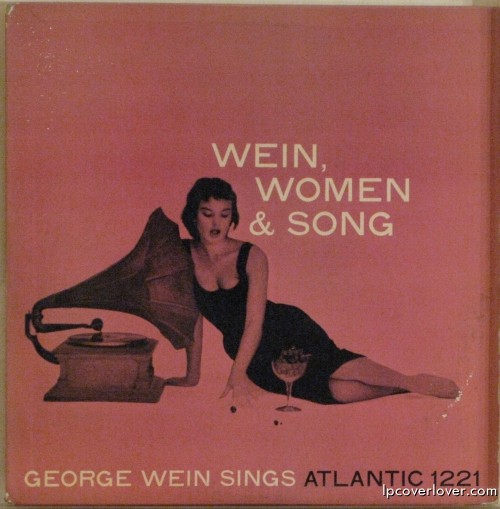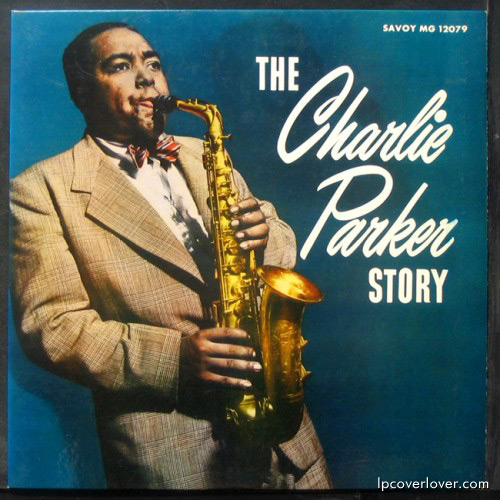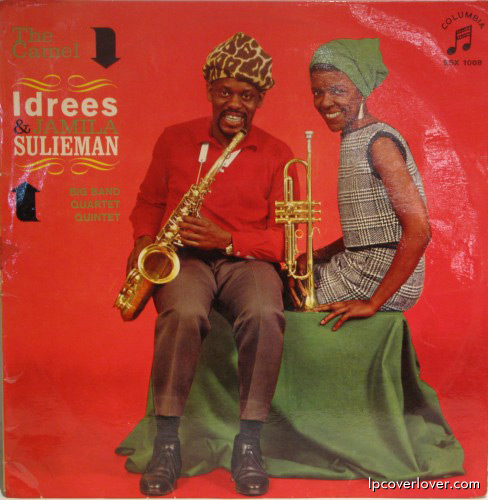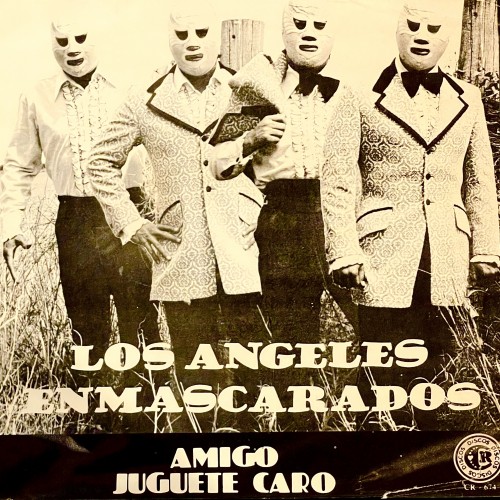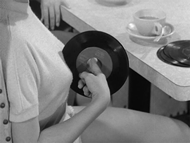Search Results
Your search for Miles Davis returned the following results.
Young Miles
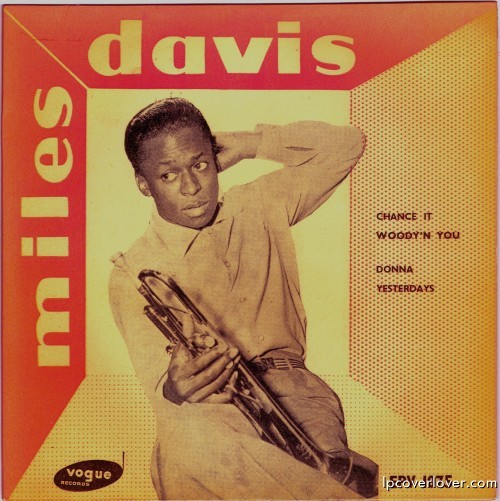
Miles Davis Vogue Records EP from England (Blue Note recordings)
Use your miles
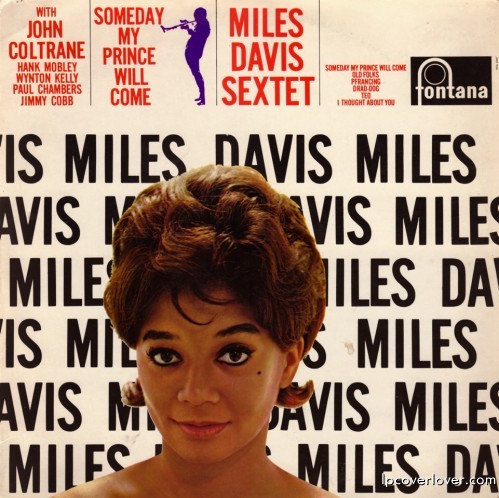
“Someday My Prince Will Come” Miles Davis Sextet (1961) With John Coltrane! Hank Mobley! Wynton Kelly! Paul Chambers! Jimmy Cobb! Alternate cover on Fontana Records (Columbia in the U.S.) The model is Davis’ wife Francis. While the liner notes credit the Miles Davis Sextet, only the title track featured six players, with Coltrane joining the quintet. It marked the last time Davis would record with Coltrane and was the only Davis Quintet studio session to feature saxophonist Hank Mobley. Teo Maceo produced! Originally, the big song from Disney’s “Snow White”, those who grew up in NYC will recognize this Miles recording as the theme to Hal Jackson’s Sunday morning radio show on WBLS (the world’s best looking sound)
Miles away

The cover on top “Music for Your Vacation” is an easy listening lp from Columbia Records Argentina that shares the same stock photo as “Miles Ahead” below.
“Miles Ahead” by Miles Davis was released in 1957. This was the first album Davis recorded with Gil Evans, who combined the ten pieces that make up the album in a kind of suite, each following the preceding one without interruption. Davis is the only soloist on Miles Ahead, which also features a prominent horn section.
Miles was reportedly unhappy about the album’s original cover, which featured a photo of a young white woman aboard a sailboat. He made his displeasure known to Columbia executive George Avakian asking, “Why’d you put that white bitch on there?” Avakian later stated that the question was made in jest. For later releases of the record, the original cover-photo has been substituted by a photo of Miles Davis.
The album features Miles (on flugelhorn) and his band for the recordings consisting of Bernie Glow (lead trumpet), Ernie Royal, Louis Mucci, Taft Jordan, and John Carisi (trumpets); Frank Rehak, Jimmy Cleveland, and Joe Bennett (trombones); Tom Mitchell (bass trombone); Willie Ruff and Tony Miranda (horns, with Jimmy Buffington replacing Miranda on one session); Bill Barber (tuba); Lee Konitz (alto sax); Danny Bank (bass clarinet); Romeo Penque and Sid Cooper (flute and clarinet, with Edwin Caine replacing Cooper on one session); Paul Chambers (bass) and Art Blakey (drums). The album features songs from four separate recording dates each with slight modifications of the band members.
A fifth recording date involved Davis alone (re-)recording material to cover/patch mistakes/omissions in his solos using overdubbing. The fact that this album was originally produced in mono makes these inserted overdubbings rather obvious in the new stereo setting.
On the alternate take of “Springsville”, Wynton Kelly features on piano as part of a version that underwent a re-write for the next recording session. Only about 10 seconds of his playing is heard on this track, although about 5 seconds of this can be heard in the master track. Nevertheless, Kelly’s contribution to the album was left uncredited until the reissues came out. (Wikepedia)
Walkin’ Miles
Miles Davis All-Stars “Walkin” with Jay Jay Johnson (Trombone), Lucky Thompson (Tenor), David Schildkraut (Alto) Horace Silver (Piano), Percy Heath (Bass) and Kenny “Klook” Clarke (Drums). Prestige Records. Cover design by Hannah. The Miles Davis Quintet digs into this Richard Carpenter classic on November 7, 1967 at the Stadthalle, Karlsruhe, Germany. (This clip features Tony Williams, Wayne Shorter, Ron Carter and Herbie Hancock.)
Session 9 (April 29, 1954)
This all-star session is among the key recordings in the history of modern jazz and the saga of Miles Davis.
Paradoxically (and the history of jazz is full of such paradoxes), the prognosis for history being made was anything but good. As Jules Colomby recalled, the musicians were to meet at Birdland in the afternoon for the ride to Van Gelder’s New Jersey studio. Lucky Thompson, coming in from Philadelphia, was so late that J.J. Johnson had just about talked the others into leaving without him when the tenorist arrived. At the studio, when all was ready, Miles told Bob Weinstock that he hadn’t brought his horn. Weinstock blanched. Colomby happened to have an old, leaky trumpet in the trunk of his car and Miles was able to coax from it the great playing heard here. (He also kept the horn, with the donor’s blessings.)
“Blue ‘n’ Boogie,” the Gillespie blues classic, is treated to an up-tempo ride. This date was one of the first real studio “jams,” with space for everyone to stretch out, and Miles, J.J., Lucky and Horace average nine choruses apiece. Dizzy’s original riff gives Thompson his send-off and there are nice background touches behind the soloists throughout. The rhythm section works flawlessly. Miles returns for two choruses, and Klook has his say with the ensemble.
“Walkin'” (also a blues, based on a piece known as “Gravy” when Gene Ammons first recorded it in 1950) is the masterpiece, however. At a more relaxed tempo the soloists preach brilliant sermons; Thompson may never have played better. As for Miles, he sums up why 1954 was a banner year for him. Not so incidentally, “Walkin'” became a cornerstone of the hard bop movement.
Session 8 (April 3, 1954)This marks the beginning of the Davis romance with the mute. He employs one throughout, although it is a cup mute rather than the Harmon that would soon become his trademark on ballads, especially on the melody statements. No trumpeter has put the mute-mike combination to better use. (It was Duke Ellington, whom Miles adored, who first discovered that the microphone could be an added tone color–on “Mood Indigo,” in a recording studio in 1930.) The cup mute has a rounder, less penetrating and less biting sound than the Harmon–a different color.
The new and potent rhythm trio of Horace Silver, Percy Heath and Kenny Clarke was unveiled here. Also on hand was little Davey Schildkraut, a fine altoist in a Parker mold. (He was once mistaken for Parker by no less an expert than Charles Mingus, in a Blindfold Test, on a record from this date–“I’ll Remember April.”) He had worked with Kenton, Buddy Rich, and George Handy among others, but was already holding day jobs to support his family, and dropped out of musical sight in the early Sixties. His presence here assures him a place in jazz history, but you can’t eat that . . .
“Solar,” a most attractive Davis line on “How High the Moon” changes, is sped by Clarke’s fine brush work. Miles solos first, crisply, then alto and piano, then Miles returns for the landing. “You Don’t Know What Love Is,” an Eckstine feature in the Earl Hines book, can become mighty doleful in the wrong hands, but Miles here reminds us of Gil Evans’ remark: “Underneath his lyricism, Miles swings.” This is a trumpet feature, after the effective bass-piano introduction.
“Love Me Or Leave Me” is taken at a brisk clip, Miles transforming the melody even as he states it. Silver’s piano turn is framed by ensemble touches, and then Miles launches a driving solo, urged on by Silver’s jabs and Clarke’s brushfire. Schildkraut is inventive and swings, with a rounder, softer tone than Bird but much fluency in the ornithological idiom. Silver returns, with that unique propulsion and some Bud Powell quotes; Miles trades fours with Klook for two swift rounds and takes two more of his own before the ensemble ending, bridge by Percy Heath. Joyful stuff.
This was no slapdash blowing date, but a session more cohesive than most organized groups could manage. And it is certainly worthy of notice that this was the first Miles Davis session (and quiet possibly the very first Prestige session) recorded by the remarkable, optometrist-turned-engineer, Rudy Van Gelder, who presided over the controls at virtually all Prestige, Savoy, and Blue Note dates for may years and must be considered the definitive bebop recording engineer.
-DAN MORGENSTERN, liner notes, Miles Davis Chronicle: The Complete Prestige Recordings 1951-56.
Sulieman and woman
Idrees & Jamila Sulieman “The Camel” Columbia Records (Scandinavia) 1964
Idrees Sulieman was an early bebop pioneer on trumpet. He was born Leonard Graham, and took up trumpet when his father could not afford to buy him a saxophone (he later played alto saxophone after moving to Europe).
He began his professional career with the Carolina Cotton Pickers in 1939. He changed his name to Idrees Dawud ibn Sulieman after his conversion to Islam. He played with Miles Davis, Charlie Byrd, Earl Hines, Ella Fitzgerald and Dizzy Gillespie. He recorded with Thelonious Monk on the pianist’s historic first sessions as a leader for Blue Note in 1947, and also recorded with Gene Ammons, John Coltrane, Coleman Hawkins, Dexter Gordon, Max Roach, and others.
He settled in Europe in 1961, firstly in Sweden, then in Denmark. He worked with fellow expatriates Eric Dolphy, Bud Powell and Don Byas. He was part of the excellent Kenny Clarke-Francy Boland Big Band for 10 years from 1963, and also worked with the Danish Radio Big Band under Thad Jones. He returned to the USA in 1982, and lived in his native Florida. He died in 2002.
Wein, Women & Song
“Wein, Women & Song” George Wein Sings on Atlantic Records. George Wein is the father of the modern music festival. In 1954 he produced the first Newport Jazz Festival and a few years later the Newport Folk Festival. He also produced the New Orleans Jazz and Heritage Festival, the Playboy Jazz Festival and many others around the world. George started his career as a jazz pianist in Boston before founding the famed Storyville jazz club and label. He has recorded and performed with many legendary musicians mostly in the classic small band swing style. I had the honor of working with George for a few years and one of my fondest memories is being invited by George and his wife Joyce to attend Miles Davis’ 60th birthday party. But the site is about lp covers and this one makes the grade on numerous counts.
In the broad’s room
In New Orleans during the 1950’s and 1960’s there were many talented musicians who made a living playing and recording R&B and rock à «n’ roll. They performed on hit records by Fats Domino, Little Richard, Ray Charles, Shirley & Lee and numerous others. However, it was their hearts desire to play jazz, modern jazz, bebop. Their stories of late night jazz jam sessions are legendary. The music of Charlie Parker, Dizzy Gillespie, Miles Davis, John Coltrane, Thelonious Monk and others made a large impact on many post World War II New Orleans musicians. There are precious few recordings of this style in New Orleans.
Compendium, by the AFO Executives, is the best recorded example of the genre. AFO, for the uninitiated, is an anacronym for All For One; it is also the name of the record label founded by Harold Battiste and his “Executives” in 1961. The name “The A.F.O. Executives” did not just happen by pulling names from a hat or secret vote or some similar arbitrary method, but is an accurate description of them because they were, are in fact, the executives of AFO Records, Inc. Having been quite successful in the studio producing record pace setters like “I Know,” the five “executives” who happened to be musicians (or five musicians who happened to be executives) began to play club dates as a group. With Tammy Lynn-the most versatile vocalist in their stable-added to the group, the stage was set for the swinginest all around group to hit the band stand.
The Executives included Harold Battiste on piano and alto sax, John Boudreaux on drums, Melvin Lastie on cornet, Peter Badie on bass, and Alvin “Red” Tyler on tenor sax. Compendium was recorded in 1963 at Cosimo’s Studio. The musicianship on this recording is exceptional and Tammy Lynn’s voice is the only known example of modern female jazz singing in the city from the 60’s that has survived. She sings, not skats, in a pure bop style. The group’s emphasis is on ensemble work instead of lengthy solos; they are tight while maintaining a loose swing. The horn arrangements and aesthetic expression make this record modern. The repertoire they chose to record reveals their Crescent City connection. There are original compositions by Melvin Lastie, Roy Montrell, Red Tyler, Harold Battiste and James Black. In addition they do very hip arrangements to tunes like Gershwin’s “The Man I Love,” Kern’s “Old Man River” and Williams’ “Mojo Hannah.” For listeners who were not around during this neglected period of New Orleans music history, Compendium offers a small glimpse into what those late night jam sessions were all about. – Jerry Brock
By late 1961, the label found great success and acclaim following the gold record success of AFO vocalist Barbara George with her national pop hit, “I Know (You Don’t Love Me No More).” The single rose all the way to number 3 on the U.S. national “pop” charts. With this financial boost, the label was then able to finance later recording projects which included the works of such young artists as Mac Rebenack (better known today as Dr. John), Willie Tee, Eddie Bo, and Nookie Boy Oliver “Who Shot the La La” Morgan. In 1963, Harold Batiste was called to California to produce the Sonny and Cher show as musical director and the label became dormant.

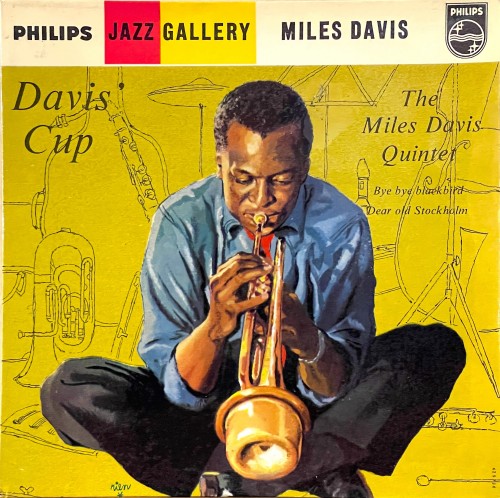

 (24 votes, average: 4.50 out of 5)
(24 votes, average: 4.50 out of 5) (47 votes, average: 3.55 out of 5)
(47 votes, average: 3.55 out of 5)